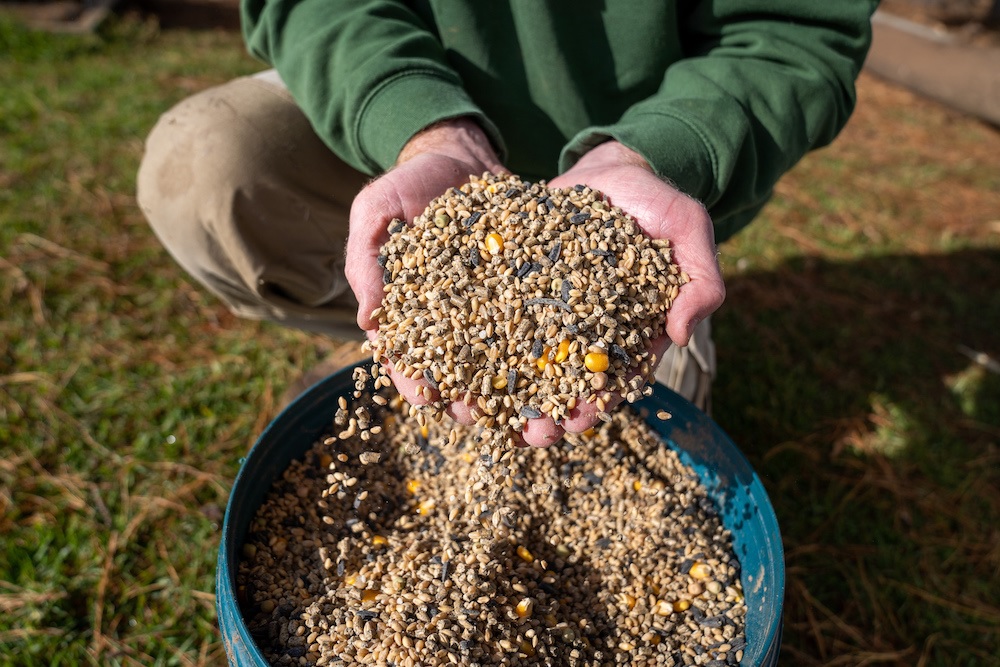The growing demand for organic food has led farmers to look for organic alternatives to conventional feeds for their livestock. While organic feed offers numerous health and environmental benefits, transitioning to organic is not without its challenges. This article explores the need for organic feed, different options available, hurdles in adoption, and steps being taken to mainstream organic feed production.
What is Organic Feed?
Organic Feed refers to feed produced without the use of synthetic fertilizers, pesticides, growth hormones, antibiotics, or genetically modified organisms. For feed to be certified organic in many countries and regions, it must be produced according to strict guidelines laid down by certification agencies. Key requirements include using organic seeds and feeds, following crop rotation practices to replenish soil nutrients naturally, and avoiding all kinds of chemicals from sowing to harvesting stages.
Common organic feed options include organic grains like corn, wheat, and barley. Legumes like soybean, alfalfa are also widely used. Grass pastures, silage, hay are among the most important organic feeds particularly for ruminants. Organic feed may also include byproducts of food processing industries like brewers grains, beet pulp provided they meet organic standards.
Health Benefits of Organic Feed
There are several health benefits of feeding livestock with organic feed instead of conventionally produced varieties:
– Absence Of Chemical Residues: Organic feed does not contain any trace of pesticides, herbicides or other agrochemicals. This ensures meat, milk and other animal products from organic-fed livestock are free of harmful residues.
– No Antibiotics And Hormones: Conventional livestock often get antibiotics for disease prevention and growth hormones for faster growth. However, organic feed restricts these practices, reducing risks of antibiotic resistance and hormone-related issues in humans.
– Higher Nutritional Value: Studies show organic feed contains higher levels of antioxidants like polyphenols. It is also relatively richer in vitamins, minerals and heart-healthy fats compared to conventional alternatives.
– Improved Animal Health: With no chemical interference, organic-fed animals exhibit stronger immunity and less incidence of diseases. This translates to fewer medical interventions and better overall well-being.
Environmental Sustainability of Organic Feed Production
In addition to health perks, organic feed has notable environmental sustainability advantages over chemical-intensive conventional feeds:
– Less Pollution: Organic farming practices eliminate the use of synthetic pesticides and fertilizers which are major causes of water and soil pollution. This protects surrounding environment.
– Carbon Sequestration: Maintaining rich soil biology through organic manures and cover cropping helps capture and store more atmospheric carbon back into the soil.
: Crop rotations and avoidance of broad-spectrum chemicals encourage greater bi– Biodiversity Boost odiversity of plants, insects, birds and other organisms in and around organic fields.
– Prudent Water Use: Organic farming is less dependent on irrigation as soil retains more moisture. It also minimizes contamination of water resources.
Challenges In Adopting Organic Feed
While organic feed production has clear benefits, making the shift brings its own challenges:
– Higher Costs: Organically managed land requires more labor, biological inputs and transition time which reflects in increased production costs compared to conventional systems.
– Scarcity Of Certified Organic Sources: Limited availability of organic grains restricts large-scale adoption, particularly for non-ruminant livestock like poultry requiring higher grain content in their diet.
– Yield Gap Concerns: There is a perception that yields may be lower for organic farmers at least during initial years of transition and certification. However, long-term studies show no significant differences.
– Knowledge And Technology Gap: Mainstreaming organic practices for crops and pasturelands requires understanding multiple aspects like soil health, nutrient management, weed/pest controls etc. which is lacking.
Bridging the Gap
To address these challenges and further adoption of organic feed, governments and private players are undertaking several initiatives:
– Subsidies On Organic Inputs/Produce: Many nations provide production/price support subsidies to make organic feed financially viable.
– Research And Demonstration Farms: Developing high-yielding organic seed varieties, low-cost organic soil amendments and showcasing model organic farms help allay yield concerns.
– Capacity Building Programs: Training farmers, vets and food business operators about organic standards and best practices equips them better.
– Public-Private Partnerships: Collaborative projects between farms, input suppliers, food brands and certification bodies facilitate access to resources and markets.
– Support Policy Frameworks: Legislations providing export incentives, marketing assistance and recognition of organic sector as “national priority” give a major boost.
As consumer preference for chemical-residue free food grows, organic feed is increasingly becoming the need of the hour. While adoption faces hurdles, the long-term health, environmental and economic sustainability advantages of organic systems make organic feed a viable choice. With continuous efforts to mainstream research-backed organic practices and develop infrastructure, challenges will reduce over time, accelerating transition to more sustainable livestock production.
*Note:
- Source: CoherentMI, Public sources, Desk research
- We have leveraged AI tools to mine information and compile it

